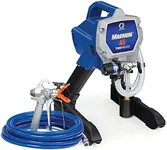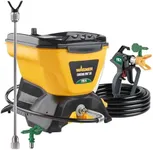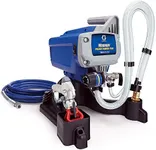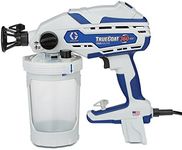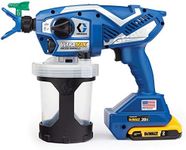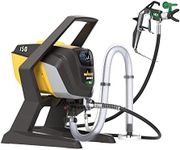Buying Guide for the Best Airless Paint Sprayers
Choosing the right airless paint sprayer can make your painting projects faster, easier, and give you a more professional finish. The key is to match the sprayer’s capabilities to the size and type of projects you plan to tackle. Understanding the main features and specifications will help you avoid frustration and ensure you get a tool that fits your needs, whether you’re painting walls, fences, furniture, or even exteriors.Flow Rate (Gallons Per Minute or GPM)Flow rate tells you how much paint the sprayer can push out in a minute. This is important because a higher flow rate means you can cover large areas more quickly, while a lower flow rate is better for smaller, more detailed work. Flow rates are usually divided into low (under 0.3 GPM), medium (0.3–0.5 GPM), and high (over 0.5 GPM). If you’re mostly doing small projects like furniture or touch-ups, a low flow rate is fine. For rooms, fences, or decks, a medium flow rate is more efficient. For big jobs like house exteriors, a high flow rate will save you a lot of time.
Maximum Tip SizeThe tip size determines how thick or thin the spray pattern will be and what types of paint you can use. Larger tips can handle thicker paints like latex, while smaller tips are for stains or thinner materials. Tip sizes are usually shown as three-digit numbers, like 515 or 311. The first digit is half the spray fan width in inches, and the last two are the hole size in thousandths of an inch. If you plan to use thicker paints or want to cover large surfaces, look for a sprayer that supports larger tip sizes. For fine detail or thin materials, smaller tips are better.
Motor PowerMotor power, often measured in horsepower (HP) or watts, affects how well the sprayer can handle thicker paints and longer hoses. More powerful motors can push paint through bigger tips and longer hoses without losing pressure. For small, occasional projects, a lower-powered motor is usually enough. If you plan to use the sprayer often, with thick paints, or need to reach far areas, a more powerful motor will be more reliable and efficient.
Hose LengthHose length determines how far you can move from the sprayer without having to move the whole unit. Short hoses (under 25 feet) are fine for small rooms or furniture. Medium hoses (25–50 feet) are good for most indoor projects and small exteriors. Long hoses (over 50 feet) are best for large exteriors or when you want to leave the sprayer in one spot and move around freely. Choose a hose length that matches the size of your typical projects and the layout of your workspace.
PortabilityPortability refers to how easy it is to move the sprayer around. Some sprayers are lightweight and handheld, while others are larger and come with wheels or handles. If you’ll be moving the sprayer up and down stairs or around a big property, look for a model that’s easy to carry or roll. For stationary work or small spaces, portability is less important.
Ease of CleaningCleaning is a big part of using any paint sprayer. Some models have features like quick-flush systems or easy-to-remove parts that make cleaning faster and less messy. If you want to save time and avoid frustration, look for a sprayer that’s designed for easy cleaning, especially if you plan to use it often or switch between different types of paint.




